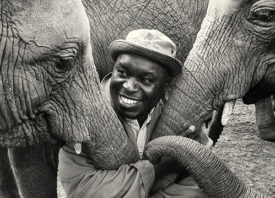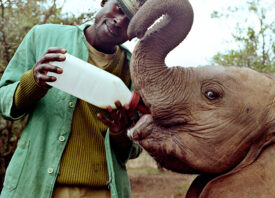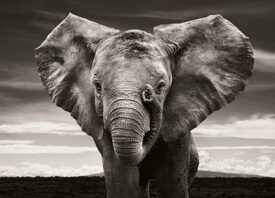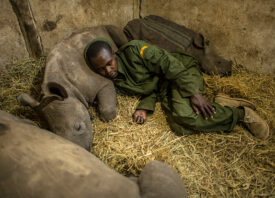Search this site
Meet the People Working Tirelessly to Save Orphaned Elephants


“Elephants are very family-orientated and tactile,” the wildlife photojournalist Justin Mott tells us. “Infants are never more than ten meters away from their mothers and other family members: siblings, aunts, and nannies. They are touching each other all the time.”
For elephants orphaned by poaching, the loss of family is traumatic, both physically and emotionally. Like humans, elephants grieve, often for many months. But if they’re lucky, they’ll be found and rescued by the Sheldrick Wildlife Trust in Nairobi, where they will sleep alongside their human keepers, who hand-feed them every three hours.


“The orphans need that constant reassurance that someone is there for them,” Mott says. “The Keepers are literally replacing their lost family member. Considering the sorts of conditions the orphans arrive in, they also have to monitor them and make sure they are okay around the clock.” The keepers offer support, and they help the elephants learn to thrive again–until they are ready to return to the wild.
“The timeline is up to the elephant really, but it often takes several years for this to happen, as the orphans go through many stages, from the nursery to the reintegration camps and then into the wild,” Mott says. “Elephants are extremely complicated and intellectual animals. Sheldrick is so careful and patient to monitor the elephants through the entire process, and it’s something I want to document further.”

Mott visited the Sheldrick Wildlife Trust (SWT) as part of his series Kindred Guardians, a multi-chapter project documenting people who protect and care for animals. Beyond the threat of poaching and trophy hunting–elephants are still slaughtered for their tusks–the elephants are also vulnerable to other pressures from the human population.
“Elephants can trample entire crops that are vital economically to many villages, so they are inherently at odds with each other,” the photographer explains. “It’s a very complicated issue, but some wonderful NGOs like Space for Giants are building gigantic corridors with electric fences to allow safe passage for the elephant herds to go through.”

As for the orphans at the Trust, they can remain there as long as they need, and they’ll have their keepers with them every step of the way. Many of the keepers remain there for years, working with the same resident elephants while also caring for new arrivals. Julius Luseno Shivegha, for instance, has been there for fourteen years. “They develop a strong bond for the animals and a purpose with their work,” Mott says.
“It’s quite remarkable. These stories can be difficult, but every single time I meet people like Julius, it’s uplifting. They inspire me to travel the globe and tell their stories, and they also remind me to have a little faith in humanity.”

Kindred Guardians is a self-funded, ongoing project by Justin Mott. He hopes someday to turn it into a book. All of the images from the project are donated to the organizations working on behalf of threatened and exploited animals.
“The best thing people can do is share or find one of the stories on my website that touches them and donate directly to that organization,” the photographer tells us. If you’d like to support the life-saving work of the Sheldrick Wildlife Trust, please make a donation here. You can adopt an orphan elephant, rhino, or giraffe for as little as $50 a year.
For more from Kindred Guardians, visit Mott’s website. You can follow him on Instagram at @askmott.





